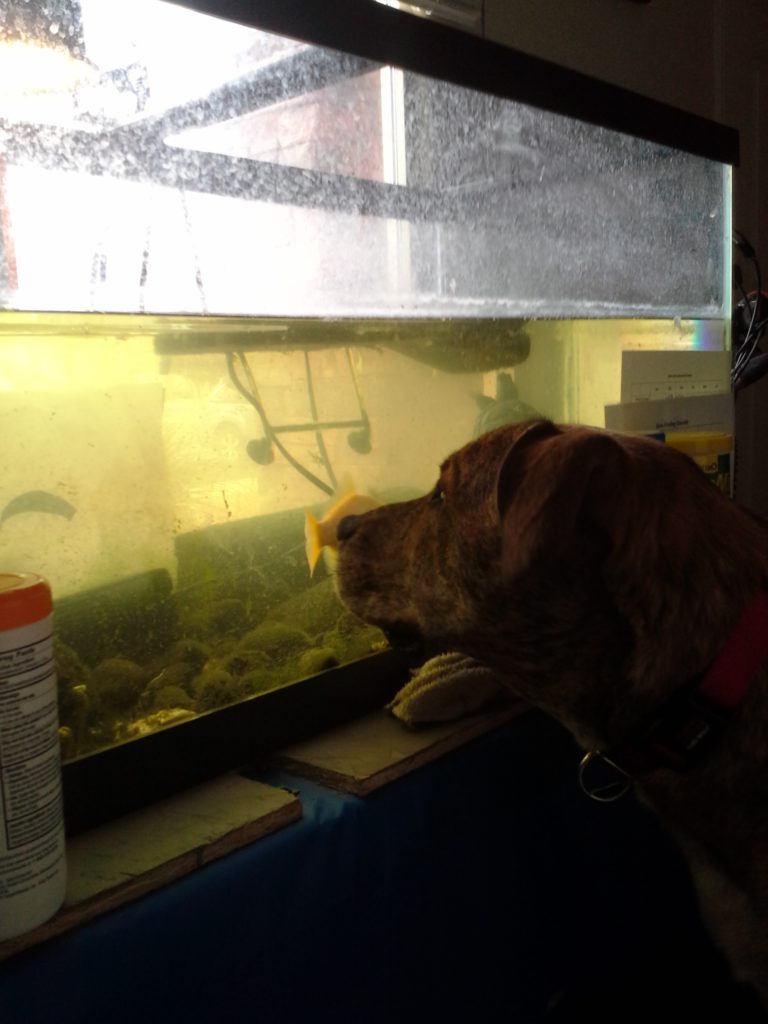This month’s training challenge was inspired by something that I try (and often fail at!) doing with Oso:
Train your pet for 5 minutes every day.
For those of you with multi-pet households you can either choose one pet to focus on or include multiple! Many people don’t know that I live in a multi-pet household as I talk way more about Oso than I do Zorro (Sorry, Z!) This month I plan to take my own advice and work with both pets.


I often hear from clients that they don’t have time to train their pet. I get it! We all live busy lives and it’s easy for training sessions to be pushed to the bottom of our priority list. I do it, too. But I can always tell when clients do follow this advice. Their pets make progress much faster and I’m usually amazed at how quickly they’ve moved through their training plan. (Make no mistake, training plans for behavior issues still usually take several months when they’re being consistently worked on.)
Behavior change is usually one of those things where progress is tied to how much we put into it. That said, many people think that they need to devote 30 minutes or an hour to a training session because that’s what they’re used to when working with a professional. In reality, our sessions are that long to make it worth everyone’s time and money; it makes no sense to come to someone’s house for 5 minutes! So don’t be fooled that you need to have long training sessions to make an impact. Realistically, putting effort into behavior change is just as much about managing your environment, reading your pet’s signals, providing enrichment, and your day-to-day interactions as it is about training sessions. Effort leading to progress comes in many forms.
Tips for success
Serendipitously, I was recently listening to an old Drinking From the Toilet podcast episode by training guru Hannah Brannigan which provided tips for making time to train your pet. It’s a great episode full of actionable advice! There are a few tips that she touched on that I want to expound on to help set you up for success this month with our training challenge:
Schedule your training sessions.
This is a great suggestion by Hannah Brannigan and I’d like to add that in addition to scheduling your training session, treat it like you’re scheduling it with someone else. I run into the pitfall that I schedule things for myself then end up blowing them off because it’s just for me. However, when it’s something that’s really important I try to pretend that I’m scheduling it with a client. I can’t blow off a client! This helps me stick to my scheduled session.
Plan your training sessions in advance.
I was pleasantly surprised to hear this on the podcast episode. It was an, “It’s not just me!” moment. Like everyone else, I also run into the problem of, “What should I work on right now?” I’ll think of something that I want to teach Oso or a skill that I want to improve on when I’m working with another dog and promptly forget about it by the time I get home. I ended up in a training rut. To get out of my rut, I made a training whiteboard.

Those who know me know that my little Type-A heart LOVES a color-coded whiteboard list. I use them for just about everything. I broke up my whiteboard into the learning stages because that tells me what I need to work on with the behaviors in each category. If I don’t know what to work on that day I can just pull out my whiteboard and choose some things from the list. That’s what makes sense for me but it’s not what will make sense for everyone! Some people like to have a more defined plan and schedule things out. Do whatever works for you so that you have a plan in the moment!
Work on fun things.
If you look at Oso’s training whiteboard there are a ton of tricks on there. He doesn’t actually need to know those behaviors but I love training them and he loves learning new things. Tricks are great for mental exercise and relationship-building and the process of training is often more important than what you actually teach. Additionally, if we’re trying to build a new habit (training for 5 minutes every day) we should make it as fun and painless as possible. That means working on things that you’ll look forward to teaching!
Now what?
- Choose which pet(s) you’re going to focus on this month. Is there something specific you want to teach?
- Get whatever supplies you need. Do you need to find some props for tricks? Do you have enough treats to last you through the month? Make sure you have everything you need so a lack of supplies doesn’t become an excuse.
- Plan your training sessions. You can use a vague planner like my whiteboard or plan something very specific (like we do with our Intensive Behavior Package clients!) Make sure to put plenty of fun on there!
- Schedule your training sessions. Treat them like an important meeting.
- Reach out to your trainer if you’re stuck with something! That’s what we’re here for.
- Post your progress on our Facebook page: www.facebook.com/petharmonytraining We love seeing pics and videos of your pets!
Happy training!
Allie
